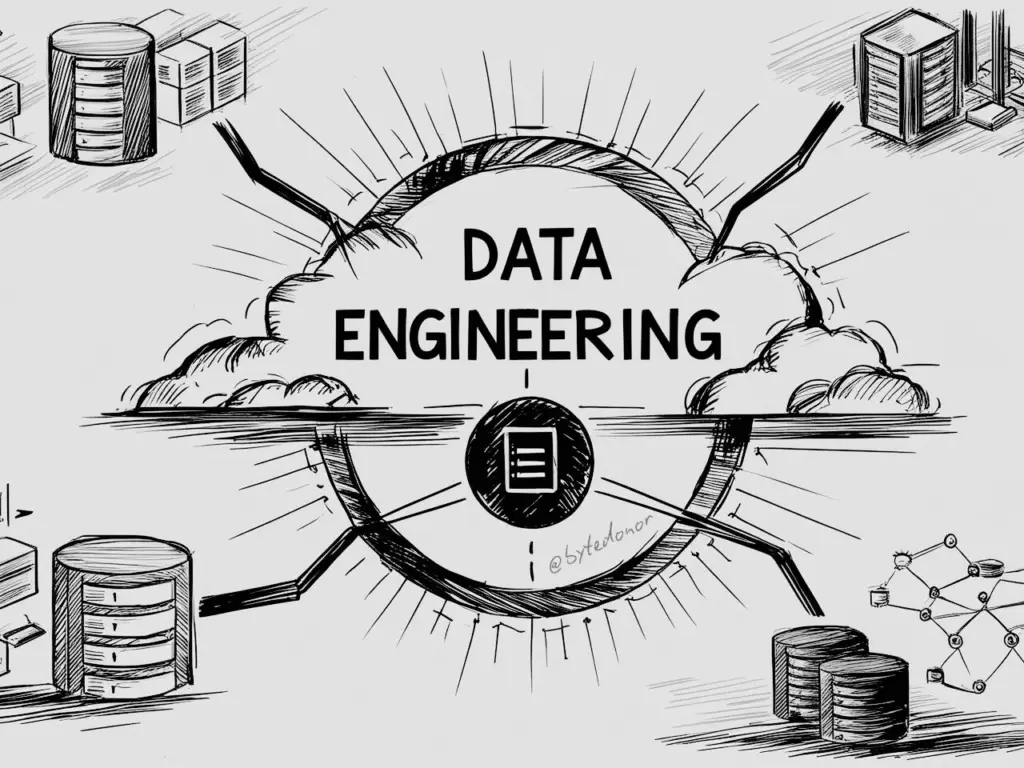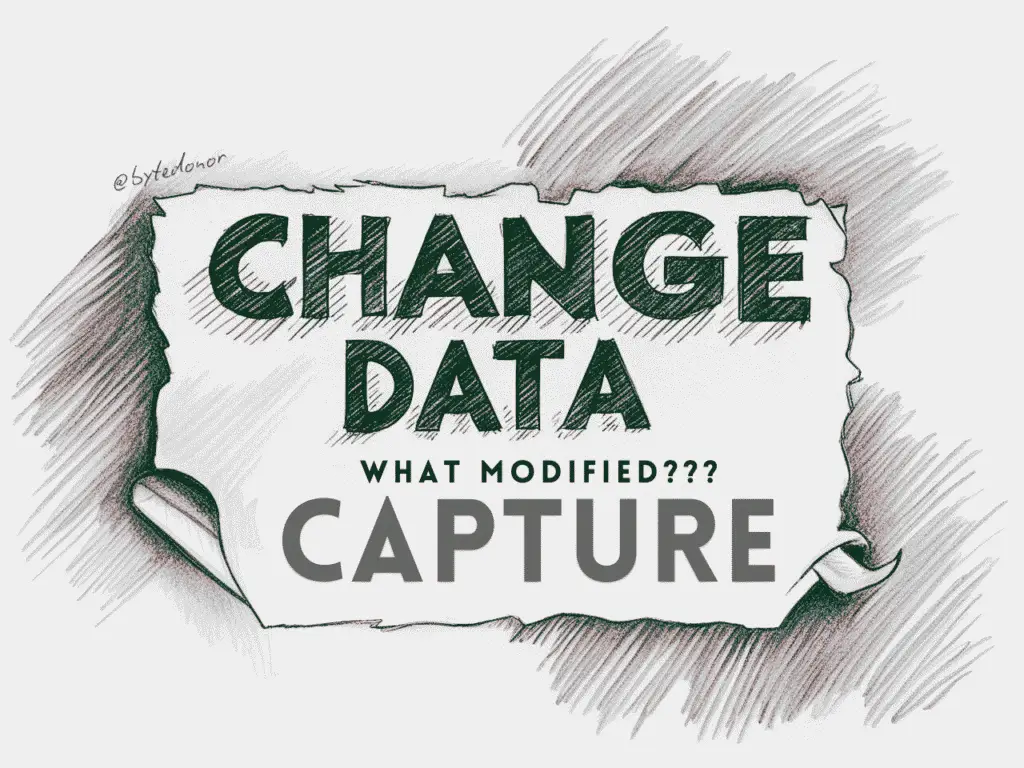Contents
- 1 The Monday Morning Reality Check
- 2 The “We’re Fine” Lie We Tell Ourselves
- 3 What’s Actually Missing?
- 4 Why This Actually Matters
- 5 ELT vs ETL: The Modern Approach
- 6 Real Business Impact
- 7 Traditional vs. Warehouse: The Real Comparison
- 8 Real Companies, Real Results
- 9 “But Our Reporting Works Fine…”
- 10 The Challenges (Let’s Be Real)
- 11 Bottom Line
- 12 What You Should Do Next
- 13 Final Thoughts
The Monday Morning Reality Check
It’s 9:15 AM on a typical Monday in Karachi. You’re in the conference room, everyone’s sipping their tea, and the CEO drops this bomb:
“How has our customer retention trended over the last three years across different regions?”
Awkward silence
Look, your team has dashboards. Reports get sent out. Data comes from ERP, CRM, random Excel files, and whatever cloud apps marketing decided to use this month. But to actually answer that question?
- You got to pull sales data from ERP (if it’s even working)
- Hunt down customer data from HR’s system
- Dig through marketing’s Google Drive mess
- Then spend hours fixing mismatched customer IDs and date formats that make zero sense
What should be a simple question turns into a week-long nightmare of manual downloads, staying late at the office, and Excel sheets that crash your laptop. And after all that, you still end up saying:
“This is our best guess…”
The “We’re Fine” Lie We Tell Ourselves
Sounds familiar? Well, you’re not alone. This is literally the daily struggle for most growing businesses here in Pakistan. Sure, reporting “works,” but underneath:
- Data analysts spend 70% of their time doing data wrangling instead of actually analysing anything.
- Different teams use different formulas for the same metrics (classic)
- Dashboards take forever to load because they’re hitting live systems
- Excel is everyone’s emergency solution for everything
- Those AI/ML projects? Still stuck in PowerPoint presentations
And here’s the kicker: Ask “How many customers do we have?” and you’ll get different answers from Sales (signed contracts), Finance (paid invoices), Marketing (repeat buyers), and Manufacturing (active orders). Everyone’s bonused on customer numbers, so good luck getting consensus. This isn’t just inefficiency — it’s a missed opportunity.
What’s Actually Missing?
You don’t need more dashboards. You don’t need fancier reports. You need a centralized data warehouse. A Data Warehouse (DW) is basically your single source of truth: a centralized repository that brings all your scattered data together, cleans it up, stores everything historically, and serves it fast. It turns your messy, all-over-the-place data into something you can actually trust and use.
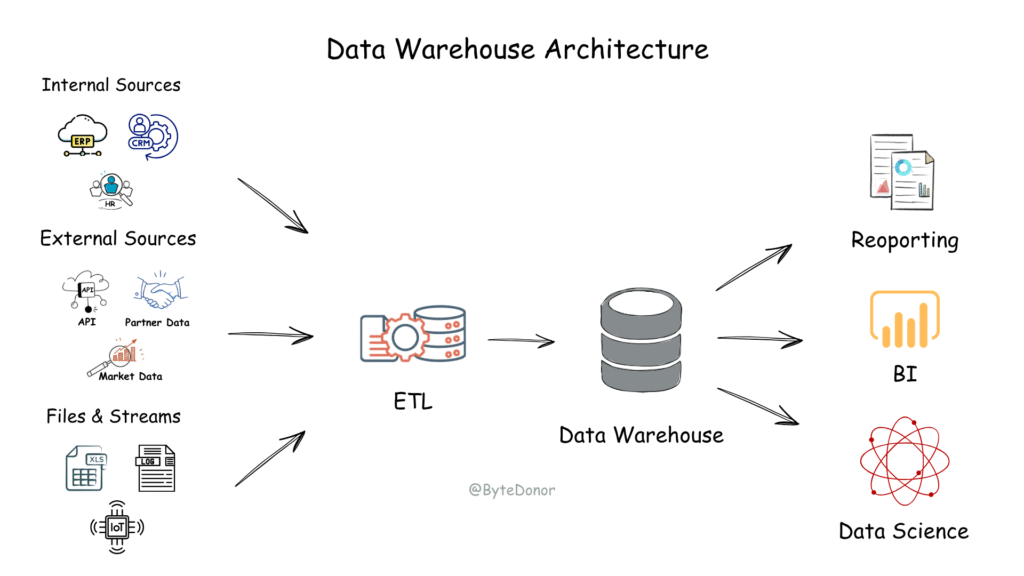
Why This Actually Matters
One Version of Truth (Well, Sort Of)
Look, the “single source of truth” thing is a bit of a marketing buzzword. You’ll probably never have one perfect version of everything; modern businesses are too complex for that. But a DW gets you to a “preferred source of truth” that everyone can at least agree on. Revenue means the same thing whether you’re in Finance, Sales, or Marketing. No more “wait, which revenue number are we using?” conversations.
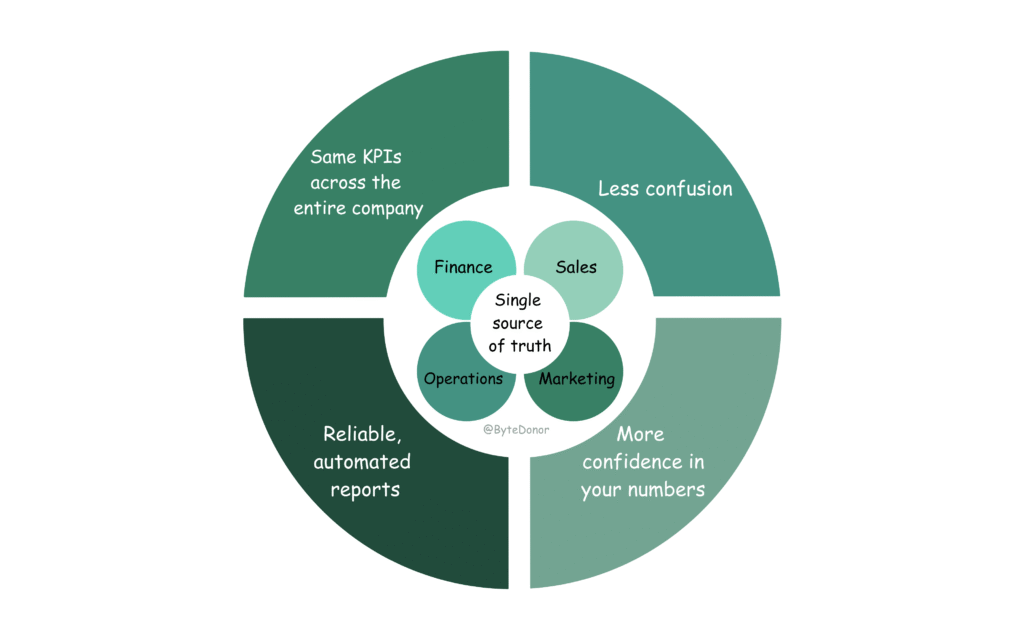
Real-Time + Historical Data
Here’s where traditional reporting absolutely fails you. One person on Reddit put it perfectly: “Can we get past 5 years sales report?” “No, I can’t get that for you.” “Why?” “Because you never approved that data warehouse I kept asking for.” Your transactional systems aren’t designed to store years of history. When data changes, it’s gone forever. A DW saves everything, so you can actually do trend analysis instead of just guessing. Unlike your current setup, a DW gives you both real-time updates and years of history in one place.
Picture this: You launch a new banking product and can instantly see how it’s performing across Karachi, Lahore, and Islamabad, while also comparing it to how your Ramadan campaign did last year. All in one dashboard.
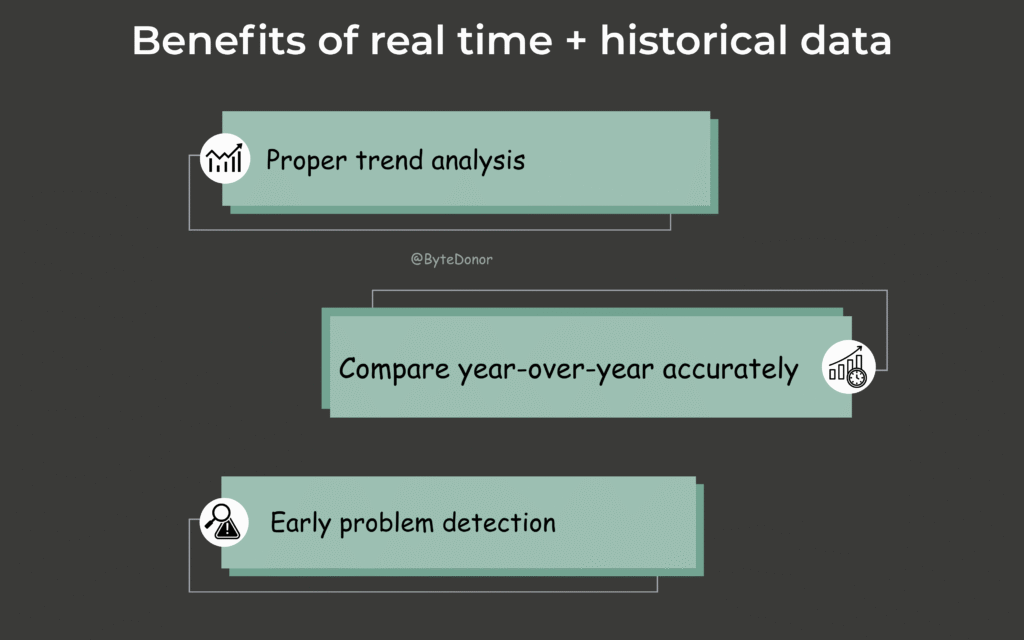
Actually Fast Queries
Your current tools probably die when you ask them to process large amounts of data. Here’s the thing: when you’re running the same transformations and aggregations multiple times for different reports, you’re basically doing duplicate work. A DW does those heavy joins once and stores the results. Your analysts can then build dashboards with simple queries instead of complex joins that crash everything.
Real example: Engro cut their supply chain analysis from 6 hours to under 10 minutes after implementing a data warehouse. That’s the difference between making decisions this week vs. next month.
ELT vs ETL: The Modern Approach
Earlier, data was: Extract → Transform → Load (ETL). This caused delays and required complex scripting that broke every other week.
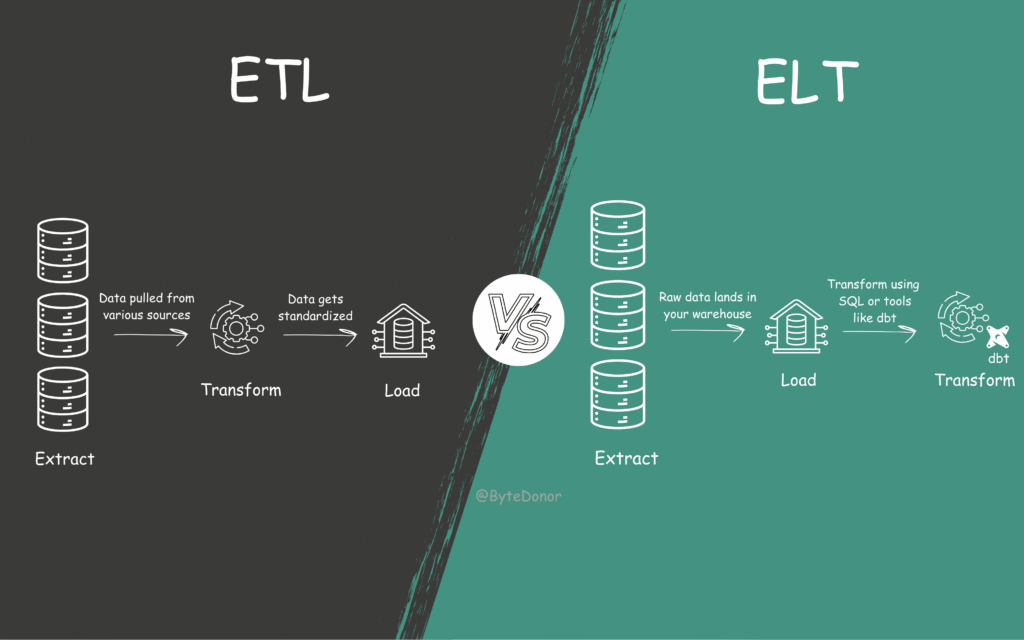
Modern approach is ELT which is way cleaner, easier to maintain, and flexible when your business needs change (which they always do). The beauty of ELT is that you can store raw data first and figure out how to use it later. No more losing valuable information because you didn’t know you’d need it six months ago.
Real Business Impact
Better Forecasting
Nestlé used their centralized sales data to improve demand forecasting across regional distributors. Result? 15% reduction in overstocking and happier retailers.
Decisions That Hit Different
A data warehouse flips your decision-making from reactive to proactive. No more waiting days for reports; you get real-time insights. Your team spots trends as they drop, not weeks later when the moment’s gone.
Efficiency That’s Actually Legit
Automated data processes let your team focus on what they’re good at: analyzing and strategizing. No more weekend grinds for Monday reports or scrambling to pull numbers from five systems when someone asks for a “quick stat.”
AI/ML Ready
A proper DW sets you up for predictive analytics. With clean, historical data, your data scientists can actually start building models for churn prediction, sales forecasting, or customer segmentation instead of just talking about it.
Security and Compliance
Need HR data to stay private while Finance can see revenue trends? Modern warehouses handle row-level security, data masking, and activity logging.
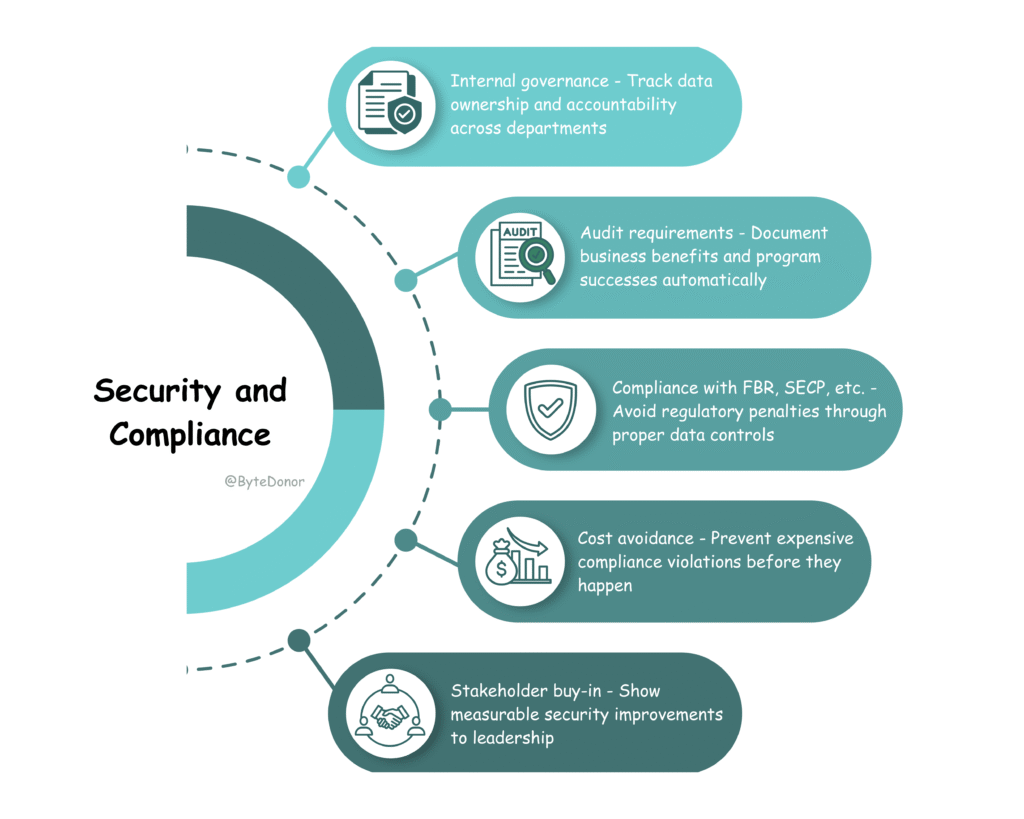
Cloud Scalability
Traditional reporting systems crash during peak times and require expensive upfront server investments for expansion. Cloud data warehouses automatically scale during busy periods like Eid season or month-end reporting, then scale back down—you only pay for what you actually use. When you expand to new cities like Lahore or Karachi, there’s no infrastructure delay or additional hardware costs. Your analysts get reports in minutes instead of hours, while IT focuses on business insights rather than server maintenance.
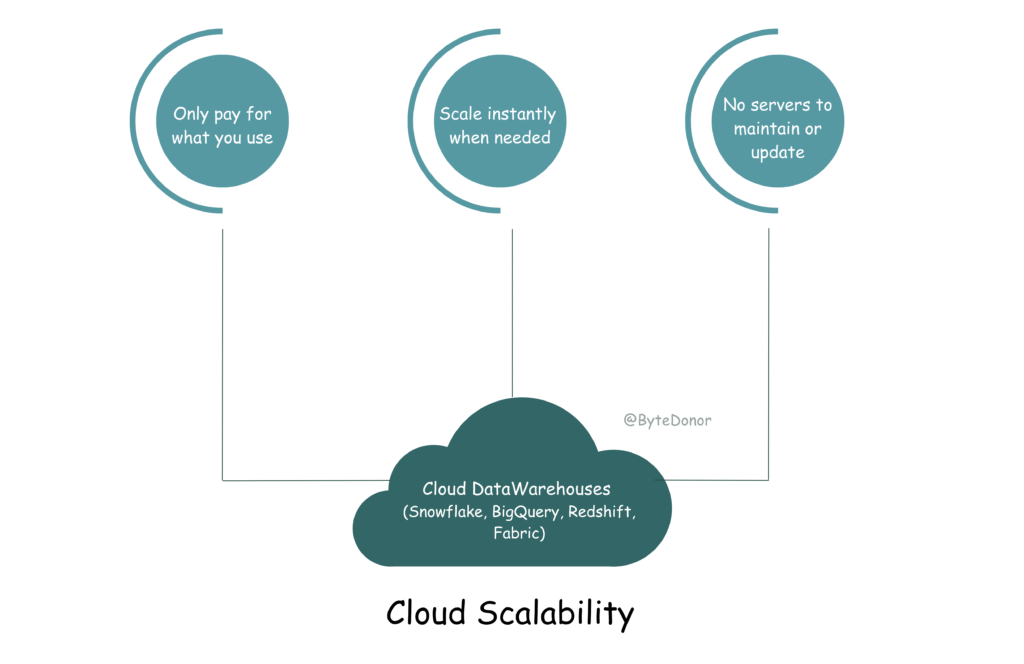
Traditional vs. Warehouse: The Real Comparison
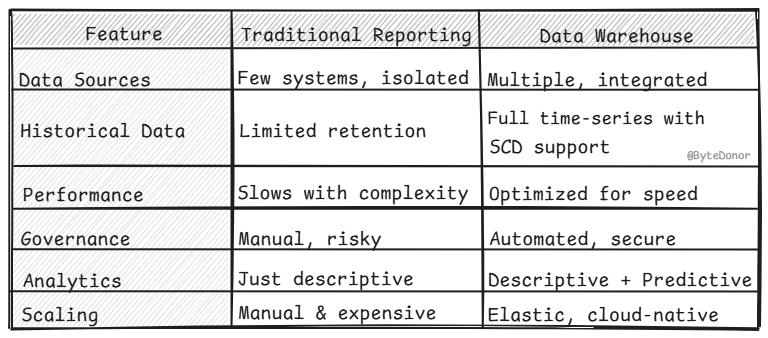
Real Companies, Real Results
 Jazz Pakistan, a telecom giant, ditched scattered data for a central data warehouse, unifying customer info and powering predictive churn models for targeted offers. Slashed customer churn by 12% in just 6 months: a total game-changer for flexing data-driven wins.
Jazz Pakistan, a telecom giant, ditched scattered data for a central data warehouse, unifying customer info and powering predictive churn models for targeted offers. Slashed customer churn by 12% in just 6 months: a total game-changer for flexing data-driven wins.
 Coca-Cola, a global beverage king, swapped clunky traditional reporting for a data warehouse, streamlining decision-making across regions. With a 300% ROI over 3 years, it’s a straight-up power move for data-driven domination.
Coca-Cola, a global beverage king, swapped clunky traditional reporting for a data warehouse, streamlining decision-making across regions. With a 300% ROI over 3 years, it’s a straight-up power move for data-driven domination.
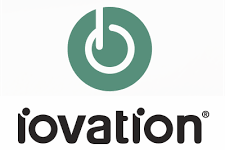 Iovation, a leader in fraud prevention, ditched laggy traditional reporting for Snowflake’s cloud data warehouse, boosting analytics and product dev. With a 214% ROI, 0.5-year payback, and $299,074 in annual savings, it’s a no-brainer flex for data-driven wins.
Iovation, a leader in fraud prevention, ditched laggy traditional reporting for Snowflake’s cloud data warehouse, boosting analytics and product dev. With a 214% ROI, 0.5-year payback, and $299,074 in annual savings, it’s a no-brainer flex for data-driven wins.
“But Our Reporting Works Fine…”
Yeah, it works. But it’s like using a Mehran when everyone else is driving Civics. Your spreadsheets and manual exports got you this far, but now it’s about speed, scale and smart decisions.
Netflix didn’t beat cable TV with better channels. They changed the entire game. Your competitors aren’t just making prettier reports—they’re predicting customer behaviour, optimizing prices, and turning data into profit.
The Challenges (Let’s Be Real)
Yes, there are costs and transitions. But here’s how to handle them:
- Cost? A data warehouse doesn’t have to be some expensive over-engineered cloud service. It’s just a database that warehouses your data. Start with a pilot project and prove ROI in 90 days
- Skills gap? Upskill your existing team + use low-code tools
- Change resistance? This is the big one. Different departments will fight for data control to protect their budgets and headcount. Get users involved early, show quick wins, and accept that not everyone will use your “enterprise truth”: but make it available so manual data silos aren’t excusable anymore
- Migration issues? Modern tools handle legacy systems, flat files, APIs, even PDFs
- The “audit surprise”? Many companies only realize they need proper data when it’s audit time or investor due diligence, and they can’t present clean historical data. Don’t wait for that wake-up call
Bottom Line
Your current setup works. But it’s not working smart. A centralized data warehouse gives you:
- One source of truth everyone can trust
- Real-time + historical analysis
- Secure, role-based access
- Faster decision-making
- Ready for AI/ML when you’re ready
- Scalability for future growth
What You Should Do Next
- Assess your current pain points (manual work, inconsistent reports, slow dashboards)
- Identify 1-2 high-impact use cases (sales performance, inventory control)
- Run a 90-day pilot with a cloud-based data warehouse
- Expand from there with confidence
Final Thoughts
Building a data warehouse isn’t about replacing your reports. It’s about unlocking what your company can actually do with its data. It’s about turning your data analysts into strategists, your reports into revenue, and your data into decisions.The question isn’t whether you need a data warehouse: it’s when you’ll realize you can’t grow any further without one.
Ready to stop just reporting what happened and start predicting what’s coming next?
Let’s make that decision today.



